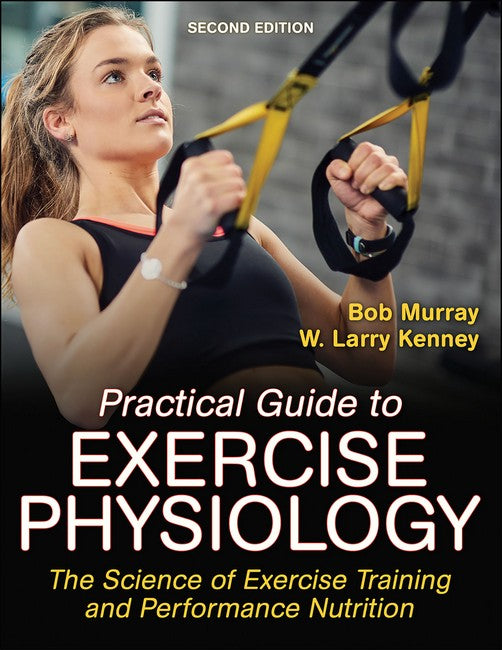Bob Murray, PhD, FACSM, was a cofounder of the Gatorade Sports Science Institute (GSSI) and served as its director from 1985 to 2008. Murray oversaw a broad program of GSSI- and university-based research in exercise science and sport nutrition that set industry standards and consumer expectations for science-based product efficacy. A native of Pittsburgh, Murray earned his BS and MEd degrees in physical education at Slippery Rock University. He was an assistant professor of physical education and head swimming coach at Oswego State University from 1974 to 1977 before earning his PhD in exercise physiology from Ohio State University. He was an assistant and associate professor of physical education at Boise State University from 1980 to 1985 before relocating to Chicago to begin work with Gatorade. In 2008, Murray founded Sports Science Insights LLC, a consulting group that helps clients with projects in exercise science and sports nutrition. An author of numerous publications in scientific texts and journals, and an invited speaker at professional meetings worldwide, Murray is a fellow of the American College of Sports Medicine and an honorary member of the Academy of Nutrition and Dietetics. Bob and his wife Linda live in Crystal Lake, Illinois. W. Larry Kenney, PhD, FACSM, FAPS, is the Marie Underhill Noll Chair in Human Performance and a professor of physiology and kinesiology at Pennsylvania State University. Dr. Kenney was awarded the prestigious Faculty Scholar Medal by Penn State for his research contributions. He has published more than 220 journal articles and dozens of book chapters on the topic of human responses to exercise, heat and cold stress, and dehydration as well as the biophysics of heat exchange between humans and the environment. He was continuously funded by National Institutes of Health (NIH) from 1986 through 2015, one of the longest-running R01 grants. Over the years, he has mentored 38 MS or PhD students along with 8 postdoctoral fellows and numerous undergraduate scholars. Dr. Kenney is the primary author of Physiology of Sport and Exercise, a best-selling textbook in exercise physiology, now in its seventh edition; it has now been translated into 12 languages. He served as president of the American College of Sports Medicine from 2003 to 2004 and received the Citation Award from that organization in 2008. He is also a fellow of the American Physiological Society and was presented with the Adolph Distinguished Lectureship Award by that organization in 2017. He is the former chair of the Gatorade Sports Science Institute and serves on many scientific advisory panels, including Nike's Science Advisory Board.
Request Academic Copy
Please copy the ISBN for submitting review copy form
Description
Part I. Warming Up: Physiology 101 Chapter 1. Muscles Move Us How Do Muscles Work? How Do Muscles Adapt to Training? How Do Muscle Cells Get Bigger and Stronger? Chapter 2. Food Really Is Fuel From Food to Energy How Do Nutrients Fuel Muscle? What About Vitamins and Minerals? Water Is a Nutrient, Too Chapter 3. Muscles Need Oxygen How Does Oxygen Get to Muscles? How Does Oxygen Use Relate to Metabolic Rate? How Does Training Help the Body Use More Oxygen? Oxygen Delivery and Performance Enhancement Chapter 4. Fatigue: What Is It Good For? What Causes Fatigue? What's the Difference Between Fatigue and Overtraining? What Role Does Fatigue Play in Adaptations to Training? Part II. The Science of Training Program Design Chapter 5. Principles of Designing Training Programs What Are the Basics of Program Design? What Makes an Effective Training Program? Training Terms Chapter 6. Training to Improve Strength and Muscle Mass How Do Strength and Mass Increase? What's the Best Way to Gain Strength and Mass? What's the Role of Nutrition? Detraining and Retraining Chapter 7. Training for Body Weight Control Weight Loss Is All About Energy Balance Why Do Some People Have Difficulty Losing Weight? What's the Best Way to Lose Fat but Protect Muscle Mass? Chapter 8. Training for Speed and Power What Are Speed and Power? What Adaptations Are Needed to Improve Speed and Power? What Kinds of Training Improve Speed and Power? What Does a Speed and Power Training Session Look Like? Chapter 9. Training for Aerobic Endurance What Are the Main Adaptations to Aerobic Training? What's the Best Way to Improve Aerobic Endurance? Should Endurance Athletes Engage in Strength Training? Why Is Endurance Capacity Important for Sprinters and Team-Sport Athletes? Part III. Special Considerations Chapter 10. Heat, Cold, and Altitude Exercise in the Heat Impairs Performance Cold Stress Chills Performance Exercise at Altitude Chapter 11. Training Children and Pregnant Women Do Children Respond Differently to Exercise Training? Can Children Improve Strength With Training? Should Women Exercise During Pregnancy? Chapter 12. Training Older Adults What Changes With Aging? How Can Exercise Training Benefit Older Adults? What Considerations Should Be Part of Training for Older Adults? Index of Common Questions From Clients

